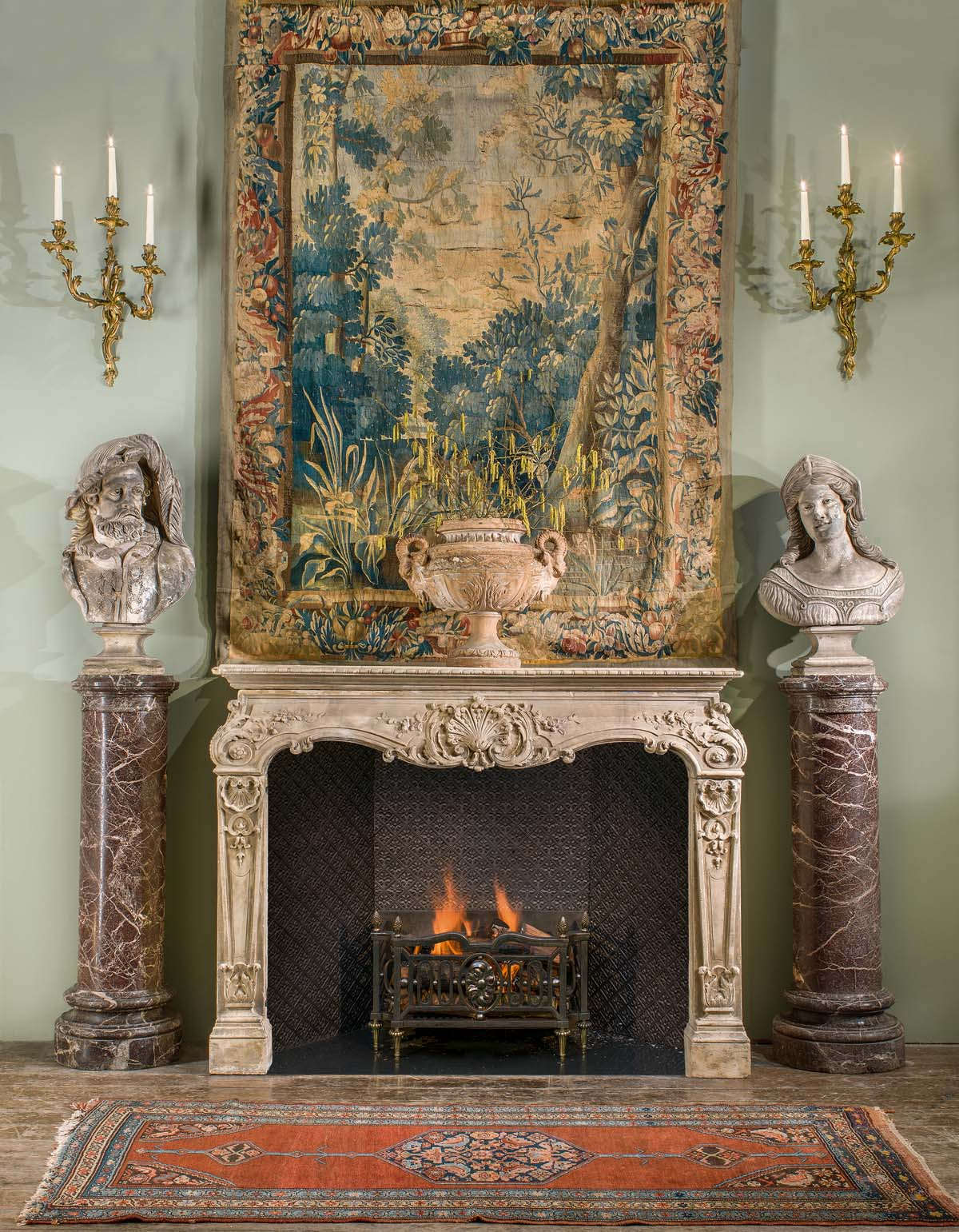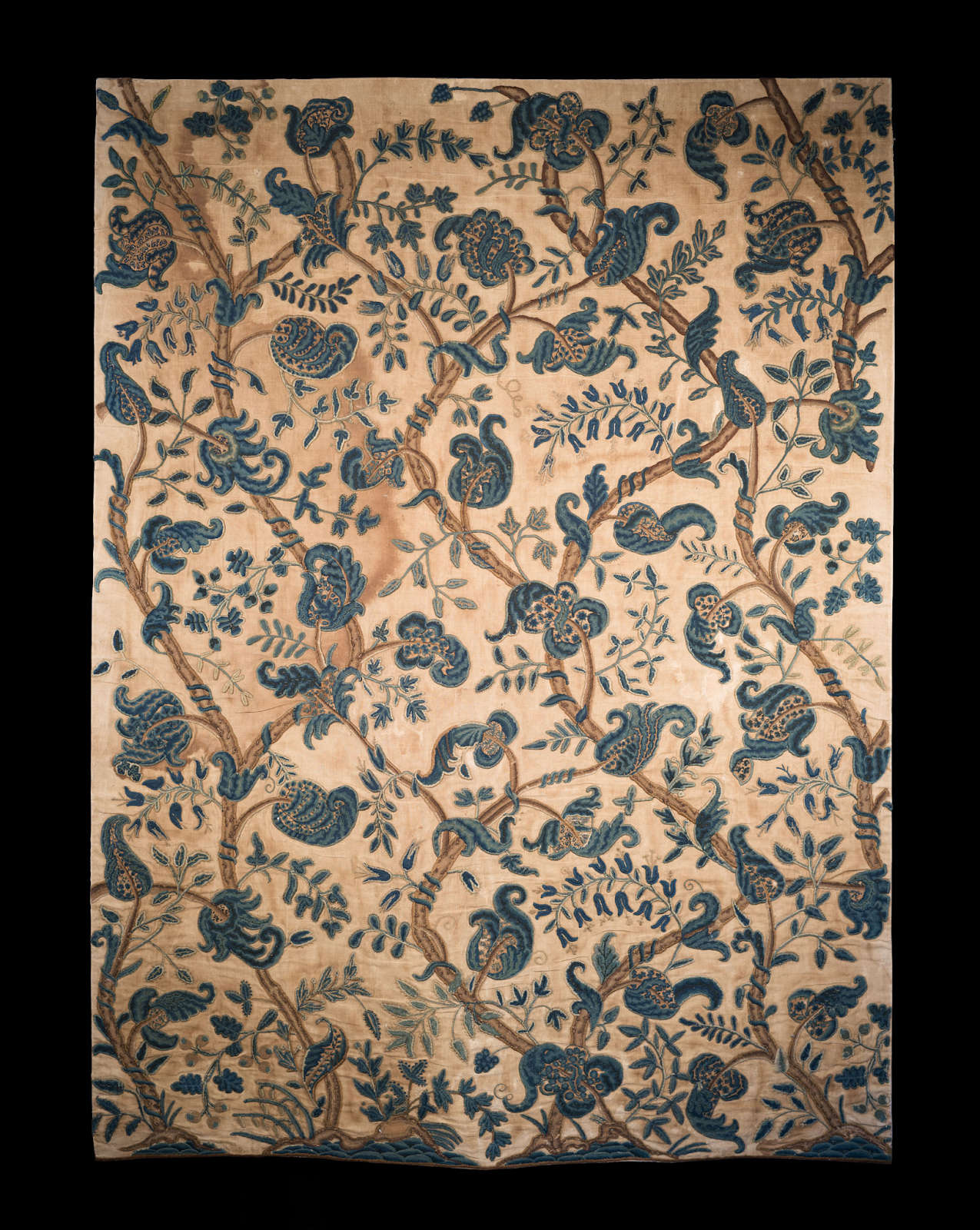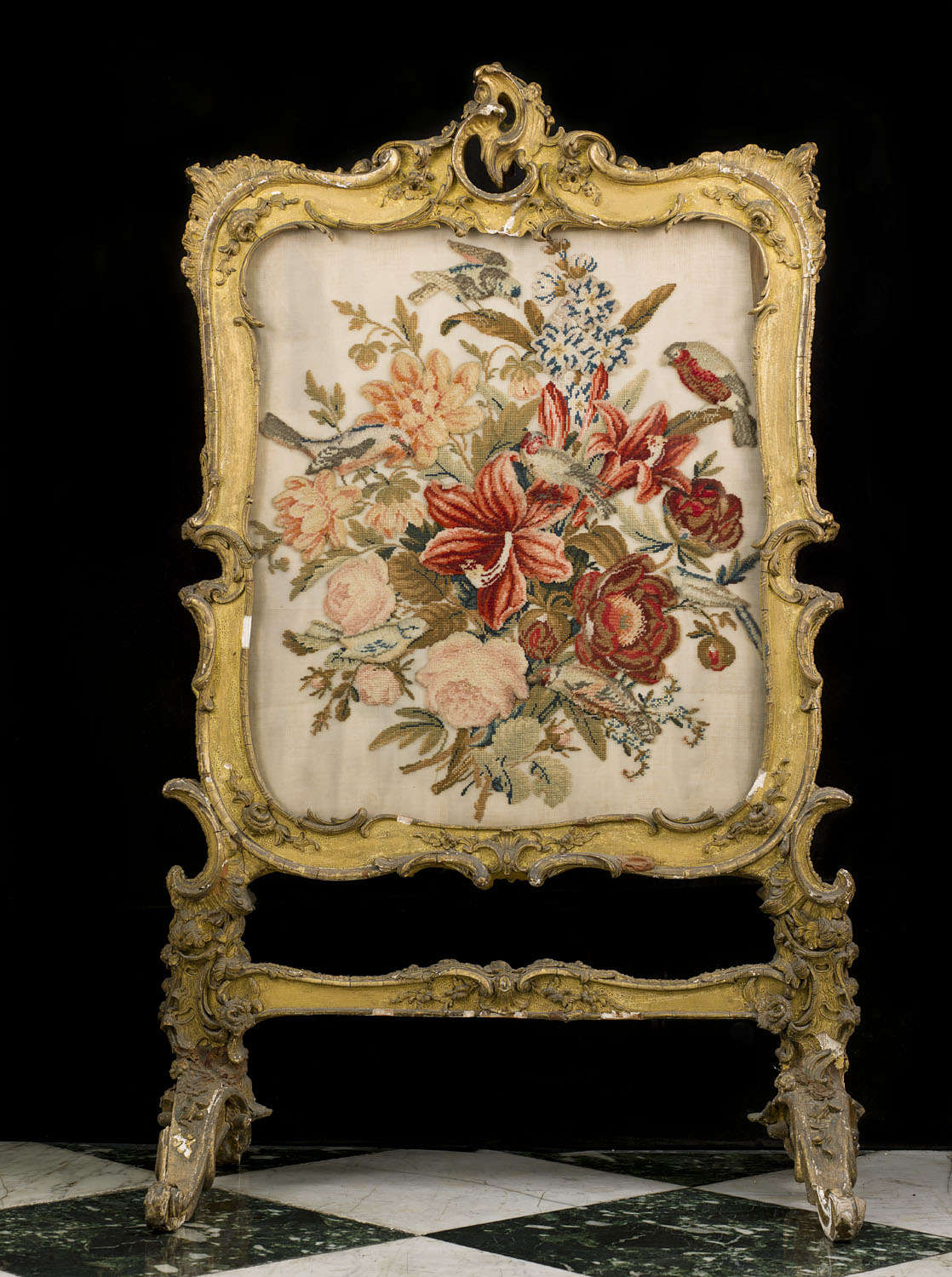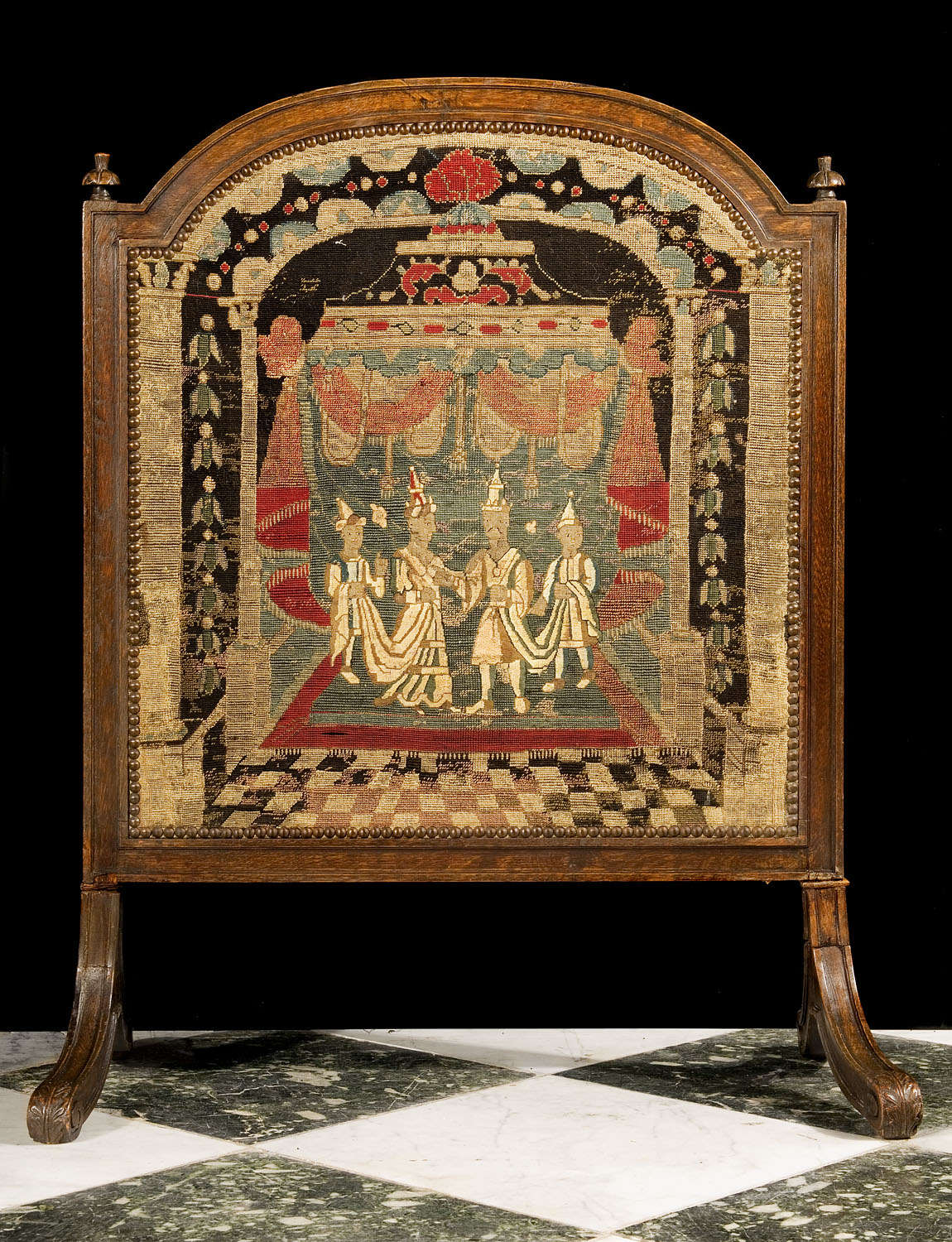Tapestry is a type of weaving and a different technique to embroidery

× 
For many centuries, antique tapestries have hung on the walls of grand interiors. In this guide, we explore the history of wall tapestry styles and popularity throughout the centuries.
Tapestry is a type of weaving and a different technique to embroidery. However, the term tapestry is sometimes used interchangeably for large pieces of embroidery, such as the famous Bayeux Tapestry.
England was at the centre of wall tapestry weaving in the medieval period and the Bayeux Tapestry was made on British soil. There are also many stunning antique French tapestries, such as Aubusson tapestries, well known for their high quality.
It is difficult to confirm a historical date for the very first wall tapestry, as surviving artefacts are very rare and any early literary mentions do not give enough detail to verify the use of a tapestry technique.
A history of tapestries up until 1500
From ancient Egypt, tapestry weave pieces using linen were found in the tombs of both Thutmose IV, who died 1391-1388 BC, and the famous Tutankhamen (c. 1323 BC). After that, the picture becomes clearer:
- Medieval: Several surviving examples from around the year 1000 illustrate a frieze-like design characterised by a long, narrow tapestry with modest height. These pieces were likely intended for display high on hall or church walls. The most famous frieze wall hanging is the Bayeux Tapestry depicting the narrative of the Norman Conquest in 1066.
- 1350-1500: The tapestries created for the few clients who could afford to commission them were exceptionally large and expensive. These tapestries frequently depicted intricate narrative or allegorical scenes. They were crafted in sizable workshops throughout northern France and the southern Netherlands, near sources of English wool.
Conventionally, these are commonly referred to as Flemish tapestries.
16th and 17th century tapestries
Many claim that the 16th century is the high point for tapestries
Many claim that the 16th century is the high point for tapestries. At the start of the century, Late Gothic styles dominated and renowned millefleur ‘unicorn’ tapestry sets were created around 1500 – The Lady and the Unicorn and The Hunt of the Unicorn.
- 16th century: Most tapestry-producing towns were under Habsburg rule. These works were commissioned by rulers like King Henry VIII and Pope Leo X, while smaller tapestries became increasingly accessible to the nobility and bourgeoisie.
- 17th century: The elite's appreciation for tapestries continued, even while painting gained popularity. Brussels remained the primary weaving center, while Sir Peter Paul Rubens in Antwerp introduced the grand Baroque style to tapestry art.
The picture below shows a large and rare 17th century crewel work wall hanging. This panel is meticulously hand embroidered in worsted crewel wool with ‘tree of life’ decoration, enormously popular in this period.
Mercury mirrors, while luxurious, had some drawbacks at the time. The high price was a barrier, they were limited in size and most critically, toxic during the production process.

× 
18th and 19th century tapestries
At the beginning of the 18th century, there was a growing interest in landscape themes
At the beginning of the 18th century, there was a growing interest in landscape themes, with some featuring hunting scenes while others depicted everyday rural life.
- 18th century: The most famous tapestries are those designed by Francisco Goya from 1775 onwards. By mid-century, the Rococo style – seen in the image at the top of this article – became popular, with pieces now significantly smaller than earlier works. But the major Brussels workshops gradually shut down this century. Tapestry was not well-suited to Neoclassicism or Romanticism, while the French Revolution and Napoleonic Wars caused disruption.
- 19th century: William Morris resurrected the art of tapestry-making in the medieval style, while a few other factories and workshops also continue to make tapestries in traditional styles.
Many tapestries by this period in time replicated paintings or earlier designs – the Industrial Revolution also had a significant impact, influencing the choice of tools, materials and dyes.

× 
Tapestries are also well-suited to firescreens
Final thoughts: Antique fireplaces and wall tapestry designs
An antique tapestry brings a softness to interiors showing that fabric is not just for curtains and furniture! In particular, they often look fantastic above or in front of antique fireplaces.
For example, this French, mid-19th century Renaissance revival walnut chimneypiece has space for a wall tapestry – perhaps one depicting a natural scene to match the floral carving on the corners.
Tapestries are also well-suited to firescreens. A tapestry fire screen serves as an attractive and decorative shield in the living room.
The image above shows a Georgian English Rococo firescreen, with carved giltwood plus decorative scrollwork, flowers and foliage.
The striking 18th century example below is a Baroque style tapestry and oak firescreen.

× 
For over 50 years, Westland London has specialised in antique fireplaces, which go so well with distinctive tapestries.
For other informative guides, browse through our full range of articles. Recently we have covered mercury glass in antique mirrors and shared our guide to Delftware.
Our antiques span the centuries and we have a wide range of wall tapestries and paintings in our collection. If you have any queries about an antique on our website, please contact us.